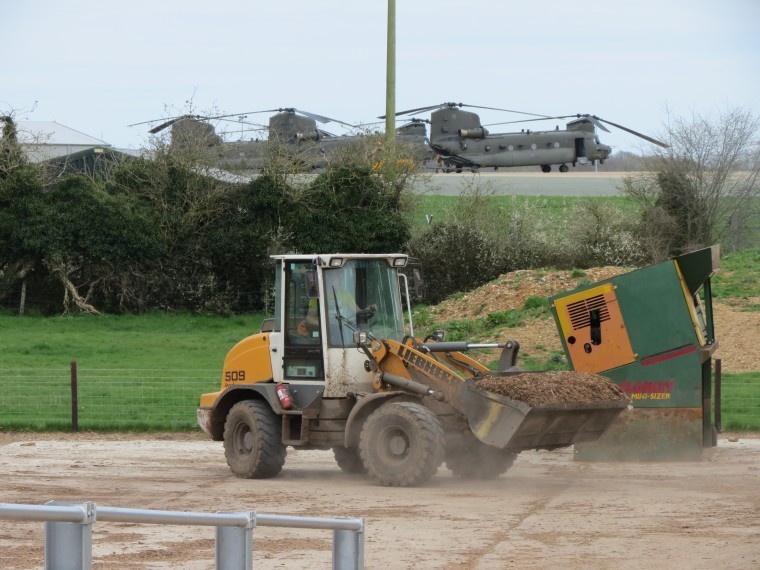Down Farm is right next to RAF Odiham, where giant Chinook helicopters taxi and take off through the day and night.
Robert Benford, his wife Stella and their four Polish workers and Danish business secretary are so used to the noise that they hardly notice it. But since the station was opened as a permanent airfield in 1937, it has had a dramatic impact on the farm.
In 1895, things were quite different. That was when Robert Benford’s great grandfather arrived at Down Farm as a tenant of the Mildmay family on Dogmersfield Estate.
In the 1920s, the estate farms were sold off, and Mr Benford’s great grandfather bought his. He farmed pretty much the same as Robert Benford does today – beef, sheep and arable. But the acreage would have been greater then, because half of RAF Odiham would eventually be built on the farm.
The chalk land with clay caps is typical of Hampshire, which in those days was considered poor quality. “Nowadays, we think the land is great because you can get on it and do stuff,” Mr Benford said.
Down Farm thrived as a mixed family farm, but it lost pieces of land as RAF Odiham expanded by compulsory purchase. The farm survived though, and, along with many others, did not really diversify until the 1980s.
Peter Benford, Robert’s father, was not enthusiastic about the prospects for farming, and let some of the arable land away. It was not thought that Robert or his brother would have a future in the industry, so Robert trained as a structural engineer and worked on constructional steelwork, building office blocks, factories and warehouses.
Robert stayed in his job until he was almost 50, and then gradually took on the farm after his father died comparatively young at 60. Stella Benford gave up nursing and was on the farm full time to help with the hand over. Robert’s brother Stephen had the farm house.
To start with, Robert and Stella just had some permanent pasture. But gradually, while Robert worked full time, they took the arable land back which Robert’s father had let away. Richard Janaway, a neighbour who is also a contractor, was used – and still is – for the arable operation.
Today, the farm is 395 acres which includes 15 acres of woodland and 50 acres of permanent pasture, some of which is part of RAF Odiham and rented from the Ministry of Defence; the rest is arable. About 30 sheep on the permanent pasture are bought as ewe lambs and sold as shearlings a year later. Bovine TB restrictions have reduced the size of the beef herd, and today there are about 20 Aberdeen Angus animals. Milling wheat, oilseed rape and spring barley are the arable crops. The grain is stored at Down Farm and marketed from there, and a hay and straw business is run from the farm as well.




